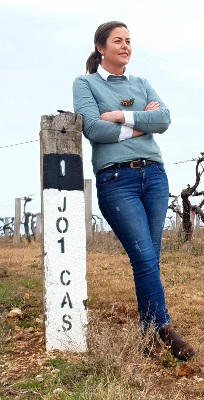Last month Treasury Wine Estates (TWE) released its Sustainability Report for 2021.It is big and it is ambitious, in step and scale with the business’ plan to be the “world’s most admired premium wine company”.
The report was released a fortnight after TWE attended the first Sustainable Wine Roundtable meeting in London, one of only two Australian founding members along with the Australian Wine Research Institute (AWRI).
Cultivating a brighter future confirms TWE’s commitments to reduce the impact of climate change with the target of being powered 100 per cent by renewable electricity by 2024 and to have achieved net zero emissions (scope 1 and 2) by 2030.
The business has achieved carbon neutrality for Lindeman’s in Europe, a 96.7 per cent recycling rate, assessed 855 TWE suppliers for their ethical, social and environmental performance and recycled 600 tonnes of glass that was broken/unable to be used through partnership with Orora’s closed loop program.
Treasury Wine Estates Sustainability Director, Michael Parks, said, “Over the last year, Treasury Wine Estates has taken a significant step towards sustainability leadership. During this time, we’ve listened and thought deeply about what matters to our employees, communities, partners, and consumers, and in May we released our enhanced sustainability strategy and some bold commitments to drive progress in the areas that matter the most to our stakeholders and business.”
The report also delved into TWE’s climate adaption strategies and the research being undertaken to “mitigate climate risk, focussing on its technical capacity to improve weather forecasting, the genetic development of more drought resistant grape varietals, and precision viticulture practices to optimise irrigation and practices on the vineyard”.
When talking to Wynn’s Viticulturist Dr Cath Kidman, one is reminded that in winemaking, preparation for climate change starts, literally, from the ground up. For her it starts with the microbiomes in the terra rossa of the Coonawarra where she has been observing and walking through Johnsons Block, the oldest surviving Cabernet Sauvignon vineyard in the region, planted in 1954.
“We know that climate change is real,” she asserts, explaining how habitually she walks through the vineyards routinely with Wynn’s’ winemakers Sue Hodder and Sarah Pidgeon, assessing and tasting the fruit.
In 2016, the hottest and driest year on record, some of the Johnsons Block vines performed extremely well with even shoot growth, glossy leaves, with a ‘Goldilocks criteria’ – just right – root to shoot yield.
Dr Kidman was intrigued. She took soil samples, observing a 40cm depth of soil before it hits limestone.
She took nine of these precious vines from Johnsons Block and propagated them. She calls them “Johnson’s babies” and is investigating whether there is an epigenetic response from vines to climate? (Translation: can a changing environment cause changes to the way a vine’s genes work?)
And if so, can vines inherit this adaptation? Have they got a stress priming response? Do vines have memory? Dr Kidman believes that they do. She says, “Vines have memory. The Cabernet vines recalled the stress event [of 2016].”
Her studies of the ‘babies’ explore the characteristics of vines – isohydric (optimists) and anisohydric (pessimists) – when to irrigate the Cabernet vines, and how to achieve a better concentration of fruit flavour.
When Dr Kidman was awarded ‘Viticulturist of the Year’ at the 2020 Gourmet Traveller WINE Winemaker of the Year Awards, Chairman of judges, Peter Forrestal said of her research:
“Catherine Kidman shows how detailed viticultural investigation can have a significant impact on wine quality. She wants the vines to produce grapes that are concentrated in colour and flavour, and is looking for judicious water management to achieve this via research that includes the use of thermography. “
All these observations and interactions with the vines, “these grand old dames” is how Dr Kidman describes them, is about “sculpting and creating our vision for a future where we marry the old with the new”.
“We’re asking, ‘What can this vineyard tell us?’, ‘How is it coping with the fluctuations in climate? That is our best chance going into a variable climate,” Dr Kidman says.
Her work is just one part of TWE’s big plan for the business “to be resilient in the face of increasing uncertainty, complexity, and change. Being able to adapt to the trends impacting our business such as climate change, requires new ways of thinking, innovation, and new partnerships.”
How fortunate they are to have Dr Cath Kidman walking through their vineyards.
